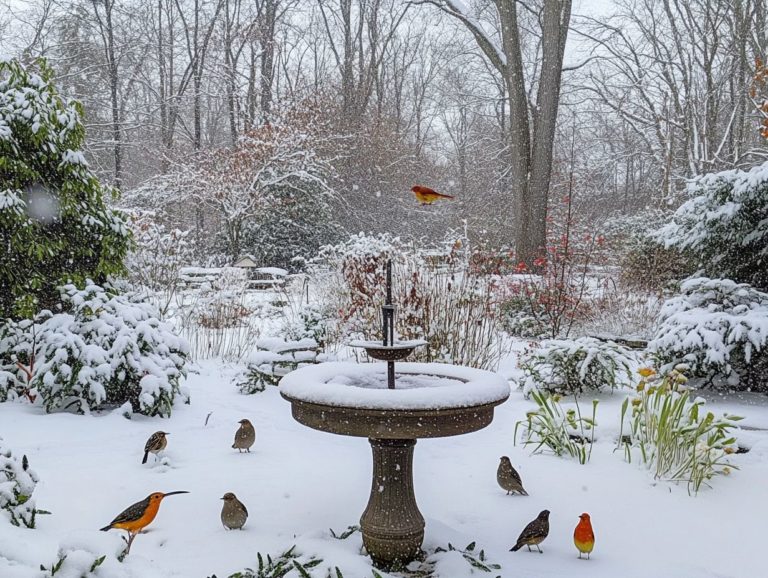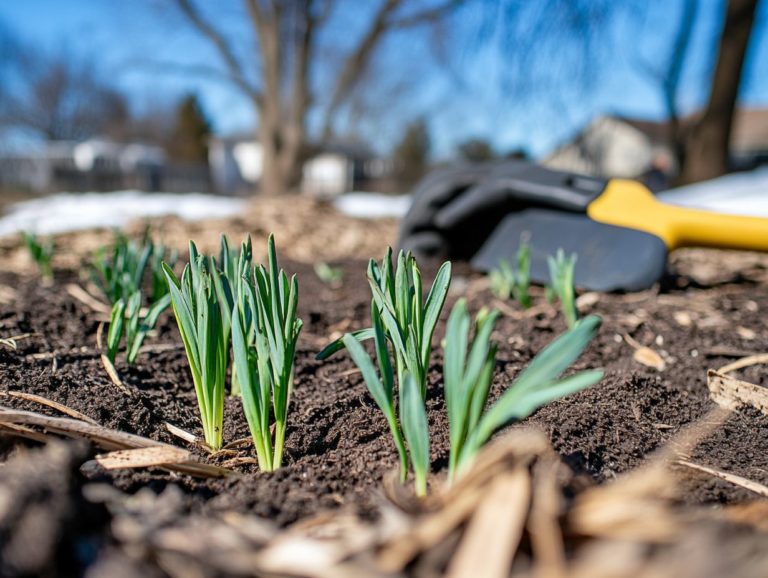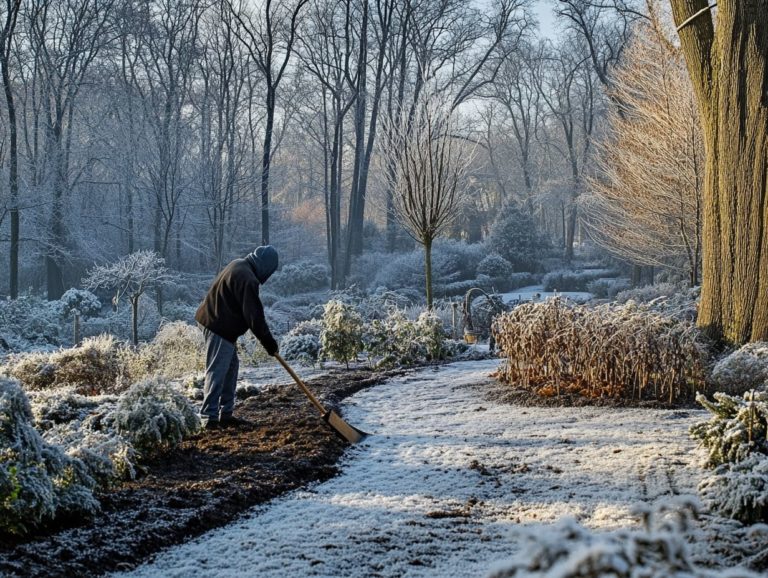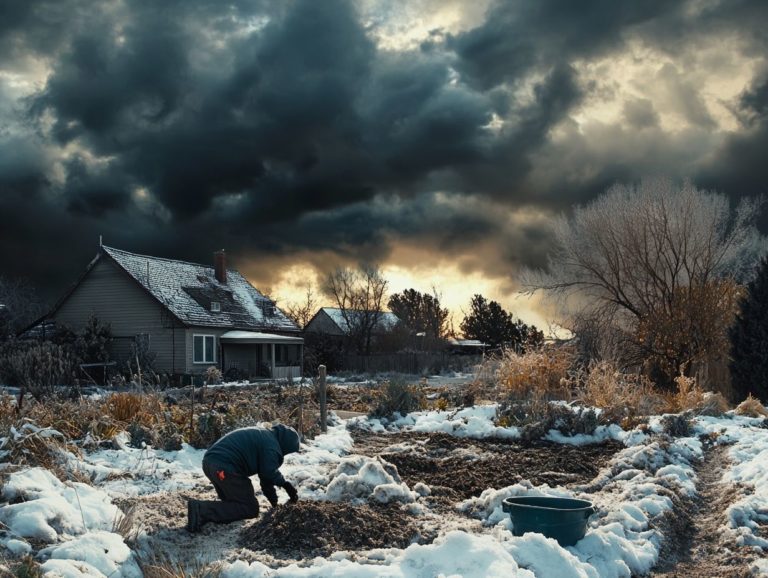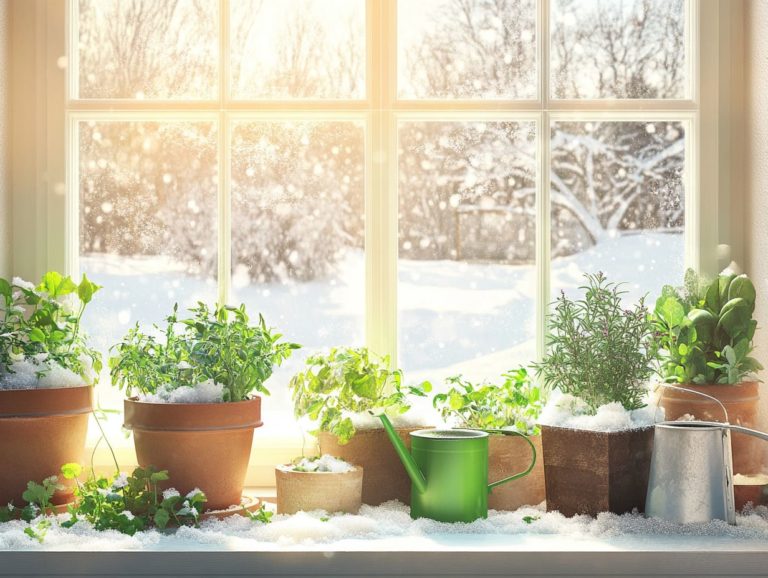5 Best Practices for Winter Plant Care
As winter draws near, it becomes essential for you to ensure that your houseplants not only survive but thrive during the colder months.
While some plants may appear resilient, others will need your extra care to withstand frost, wind, and diminished sunlight. You will also find discussions on common pitfalls and answers to your most pressing questions about winter care. With these strategies, you can keep your garden flourishing, even amidst the chill!
Contents
- Key Takeaways:
- 1. Know Your Plant’s Cold Tolerance
- 2. Water Wisely
- 3. Protect from Frost and Wind
- 4. Mulch to Insulate Roots
- 5. Prune and Clean Up
- What Plants Are Most Vulnerable in Winter?
- Frequently Asked Questions
- What are the best practices for winter plant care?
- How often should I water my plants in the winter?
- Can I move my plants to a warmer location during the winter?
- What is the best way to protect my plants from extreme temperatures?
- How do I know if my plant has a pest or disease problem?
- Do I need to fertilize my plants in the winter?
Key Takeaways:
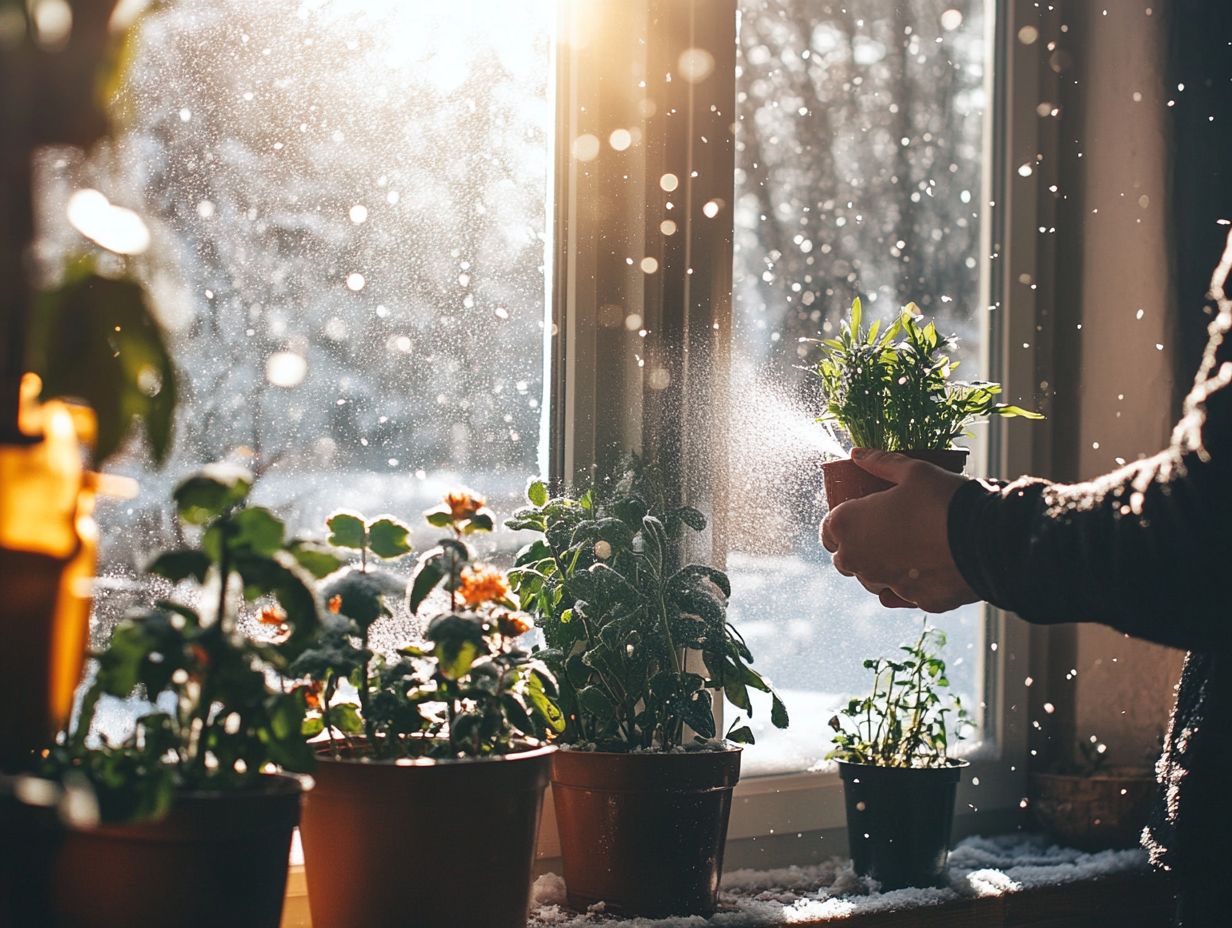
- Know your plant’s cold tolerance to determine how much protection it needs in winter.
- Water wisely by adjusting frequency and amount to prevent root damage and promote healthy growth.
- Protect plants from frost and wind by covering them or creating wind breaks.
1. Know Your Plant’s Cold Tolerance
Understanding your houseplants’ cold tolerance is essential for keeping your indoor plants healthy throughout winter. Different species can handle varying temperature extremes. As an indoor gardening enthusiast, it’s important for you to know how to care for plants like Air Plants and Spider Plants. This knowledge will help you prevent leaf drop.
Expert insights from sources like Megan Hughes and Joseph Tychonievich, along with publications like Better Homes & Gardens, can provide you with valuable tips for maintaining your indoor oasis.
To determine their cold tolerance, start by checking the lowest temperatures in your home, especially at night when many plants are most vulnerable. Use a thermometer to monitor indoor temperatures, and consider relocating your plants away from chilly drafts near windows or doors.
Assessing the overall health of your greenery watching for signs like yellowing leaves or stunted growth can also offer clues about their condition. During winter, maintaining consistent humidity levels and utilizing grow lights can create a warm, nurturing environment, allowing your plants to thrive despite cooler external conditions.
2. Water Wisely
Watering your indoor plants wisely is essential for their vitality, especially during winter when humidity levels tend to plummet, leading to stress and pesky leaf drop. Incorporating must-have plants for winter gardens can also help maintain a vibrant indoor environment.
In these chillier months, it s vital to use a moisture meter a tool that measures how wet or dry the soil is to gauge the soil’s dryness accurately. This handy tool allows you to determine the perfect moment to water, significantly reducing the risk of over-watering one of the most frequent pitfalls for houseplant enthusiasts.
Remember, each plant comes with its own watering preferences; for example, succulents and cacti thrive on far less moisture compared to their tropical counterparts like ferns or pothos.
By tailoring your watering schedule to the unique needs of each plant and considering the indoor climate, you ll keep them hydrated without the looming threat of root rot or other water-related woes.
3. Protect from Frost and Wind
Keep your indoor plants thriving this winter! It’s essential to shield them from frost and wind, both of which can severely impact their health and growth. Following winter plant care guidelines can help ensure their well-being.
Implementing effective strategies can truly make a significant difference in their well-being. Utilizing protective wraps can help reduce watering when conditions are challenging. For example, using window coverings like thermal curtains can help maintain a stable indoor temperature by minimizing drafts and heat loss.
Consider relocating your plants to more sheltered areas within your home, where they are less exposed to those chilly drafts. Incorporating grow lights, such as those offered by Soltech Grow Lights, can enhance their light exposure, ensuring they bask in brightness even on the dullest winter days.
Maintaining manageable temperature extremes is key, as this not only prevents stress but also encourages optimal growth for your cherished greenery.
4. Mulch to Insulate Roots
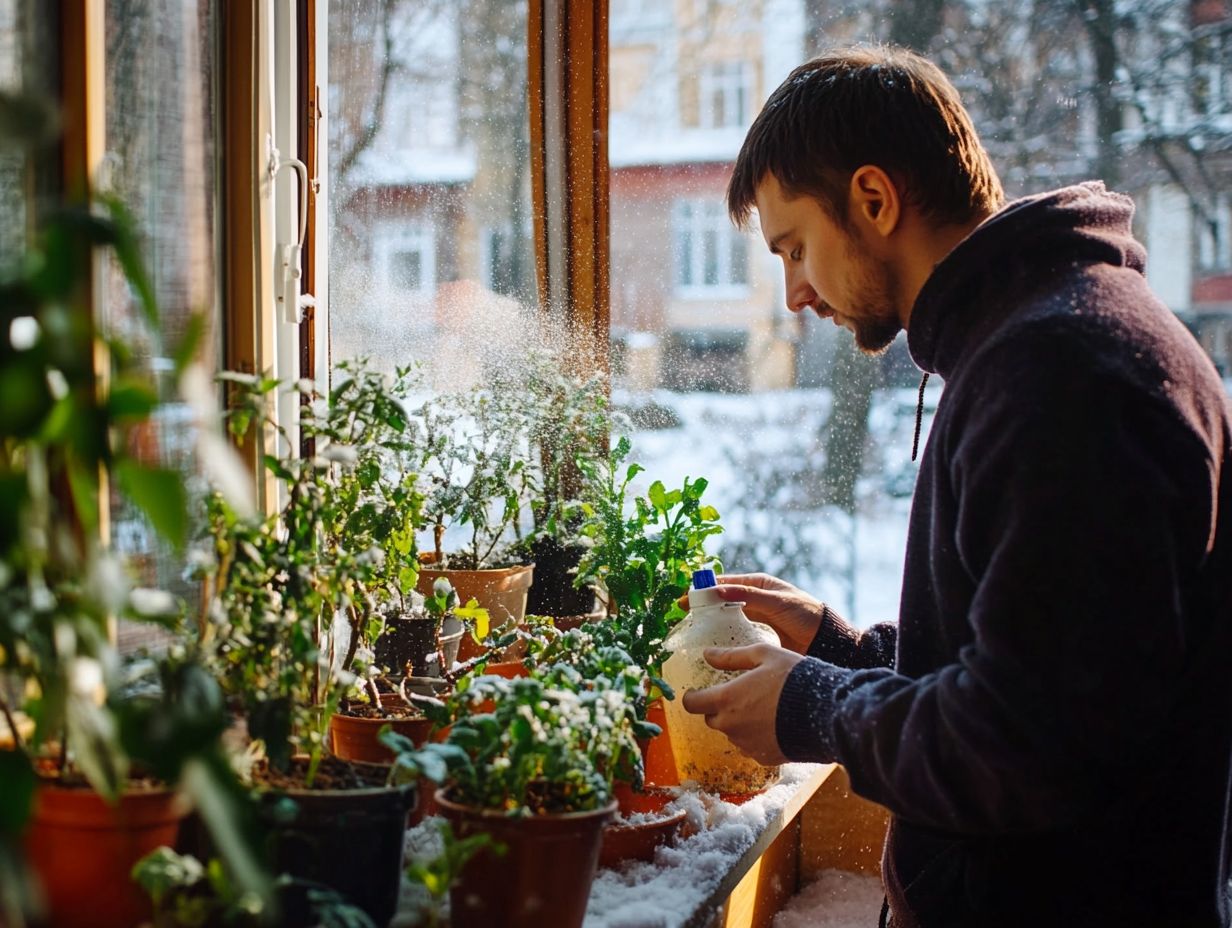
Mulching is crucial for insulating roots. It protects houseplants from harsh winter conditions, and employing winter planting strategies for gardeners can further help them retain moisture and warmth.
Using the right mulch type can help manage soil dryness and temperature fluctuations. Organic materials like shredded bark, coconut coir, or straw regulate moisture and enrich the soil with nutrients as they decompose.
Consider each plant’s specific needs when choosing your mulch. For example, tropical houseplants benefit from a thicker layer to retain humidity, while succulents prefer a lighter option.
Layering mulch enhances its effectiveness. It provides temperature stability and creates a more resilient microenvironment for your plants.
5. Prune and Clean Up
Regular pruning and cleaning improve your indoor plants’ appearance and promote healthier growth. This helps prevent issues like leaf drop and pests.
Timing is key; prune during the plant’s growing season to encourage new growth. Tailor your methods for each variety, like cutting back leggy growth on pothos.
Keeping leaves clean is vital for pest protection. Wipe the leaves with a damp cloth or spray regularly to eliminate pests like spider mites and aphids.
What Plants Are Most Vulnerable in Winter?
Some indoor plants are especially vulnerable in winter. Knowing which ones need that extra care and following the best practices for winter planting can improve their health and longevity.
Tropical plants like peace lilies and pothos struggle with lower indoor humidity. They thrive in humidity levels of 50% or higher, so misting them or using a humidifier can help.
Temperature is also important; many houseplants do best above 60 F. They can get stressed by cold drafts.
For more tips on caring for these plants, check resources like Better Homes & Gardens for guidance on their specific needs.
How Often Should Plants Be Watered in Winter?
Figuring out how often to water plants in winter can be tricky. Understanding their needs and checking soil dryness helps you establish a good schedule.
A moisture meter is a useful tool that shows you the soil’s moisture level. Just insert it near the roots to see if the soil is wet or dry.
Succulents and cacti prefer dry conditions. Their soil remains moist much less frequently than that of tropical plants, which like a damp environment.
Adjust your watering based on these readings to avoid overwatering and root rot. Remember to consider factors like light exposure and pot size, which affect how quickly plants dry out.
What Are the Best Ways to Protect Plants from Frost and Wind?
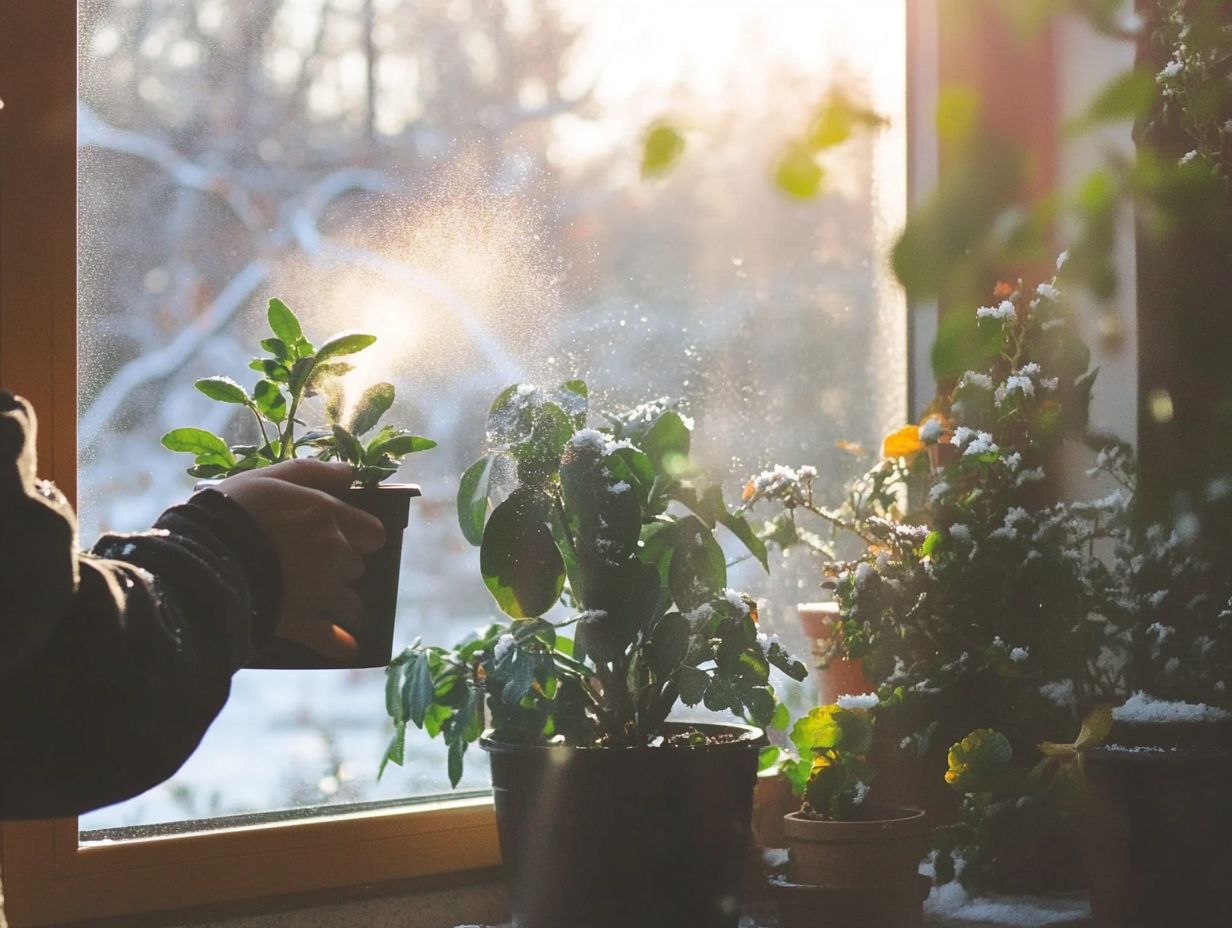
Effective frost and wind protection strategies can significantly enhance your indoor plants’ resilience and overall health during the winter months, especially when following the best practices for plant care in cold climates.
Take practical steps to protect your plants, like relocating them away from drafty windows and ensuring they receive ample natural light. You can create an environment that minimizes stress on your green companions.
Using protective wraps serves as a barrier against chilly air, while artificial grow lights can fill in for reduced daylight, promoting healthy growth. These actions help your plants live longer and healthier.
These measures not only help maintain optimal temperatures but also cultivate a vibrant atmosphere where your plants can thrive, even in harsh conditions.
What Types of Mulch Are Best for Winter Plant Care?
Choosing the right mulch is essential for your plants’ survival this winter! It is crucial for insulating roots and maintaining optimal soil conditions for your indoor plants.
You have a variety of mulch options at your fingertips, each offering unique properties that enhance your plants’ overall health. Natural mulches like shredded bark, straw, or coconut coir are excellent choices as they retain moisture and enrich the soil with essential nutrients over time.
On the other hand, inorganic options like pebbles or rubberized mulch provide durability and effective temperature regulation without the risk of decomposition. By selecting the appropriate material, you can create a microclimate, which is a small area with different weather conditions, that shields roots from temperature fluctuations, ensuring your plants not only survive but thrive even in the colder months.
When Is the Best Time to Prune Plants for Winter?
Understanding when to prune your indoor plants for winter is key to enhancing their resilience and promoting healthier growth. By removing dead foliage, you encourage new development, setting the stage for flourishing plants.
Timing is everything, as different species enter dormancy at varying points during the colder months. For example, hardwood plants often benefit from pruning in late winter, when they are fully dormant, while tender varieties may need your attention earlier in the season.
To maintain your plants effectively, wield clean, sharp pruning shears for precise cuts, concentrating on eliminating any dead or damaged branches. Stay attuned to each plant’s unique growth cycle, creating an environment where they can thrive and rebound with renewed vigor come spring.
What Are Some Common Mistakes in Winter Plant Care?
Many indoor gardeners often stumble into common pitfalls when it comes to winter plant care, such as neglecting humidity levels or forgetting to pause fertilizer application. To avoid these issues, consider following 5 tips for starting a winter garden. These oversights can lead to frustrating issues, including leaf drop and increased vulnerability to pesky houseplant pests.
In addition to these missteps, you might overlook the dangers of over-watering, a mistake that’s all too easy to make during winter. With lower light levels and cooler temperatures, your plants can find themselves in a humid environment that invites root rot. To avoid such issues, it’s helpful to follow best practices for winter gardening.
Under-pruning can also stifle growth, resulting in leggy plants as they reach for light. It s crucial to be mindful of temperature fluctuations; drafts from windows or heating vents can create stress for your delicate foliage.
To tackle these winter challenges effectively, consider the following strategies:
- Adjust your watering schedule to meet your plant’s specific needs.
- Prune during the dormant season to promote healthier growth.
- Create a stable, warm environment by moving plants away from cold drafts or using humidity trays to maintain optimal moisture levels.
Frequently Asked Questions
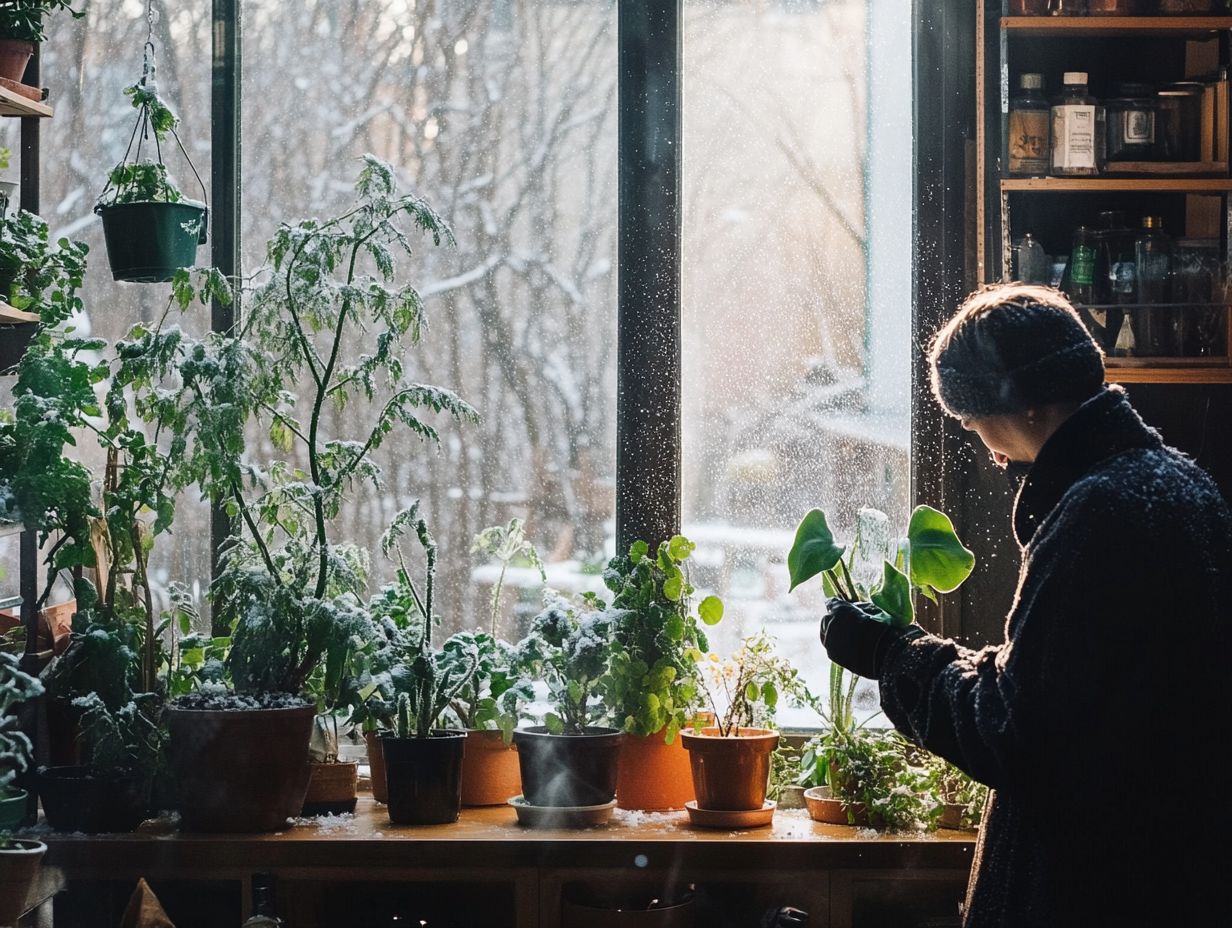
What are the best practices for winter plant care?
Use these five practices to keep your plants thriving through winter: proper watering, providing adequate sunlight, maintaining proper humidity levels, protecting from extreme temperatures, and following the 5 best practices for winter soil care to keep an eye out for pests and diseases.
How often should I water my plants in the winter?
Always check the soil moisture first! Water only when the top inch is dry. In the winter, plants typically require less water due to decreased sunlight and cooler temperatures.
Can I move my plants to a warmer location during the winter?
It is generally not recommended to move plants to a warmer location during the winter. Sudden changes in temperature can shock the plants and cause damage.
Instead, it is best to help your plants adjust to their winter environment gradually.
What is the best way to protect my plants from extreme temperatures?
To protect your plants from extreme cold, consider using a layer of mulch around the base of the plant or covering them with a frost cloth.
If possible, moving them indoors is another great option. For extreme heat, providing shade or misting the leaves can help.
How do I know if my plant has a pest or disease problem?
Inspect your plants regularly for any signs of pests or diseases. Look for discoloration, wilting, or abnormal growth.
Act fast if you spot any issues! Remove the affected areas or treat them with appropriate methods.
Do I need to fertilize my plants in the winter?
In most cases, it is not necessary to fertilize plants during the winter. Fertilizer encourages new growth, which is not ideal during the dormant winter season.
If your plant shows signs of nutrient deficiency, a light application of fertilizer may be beneficial.

